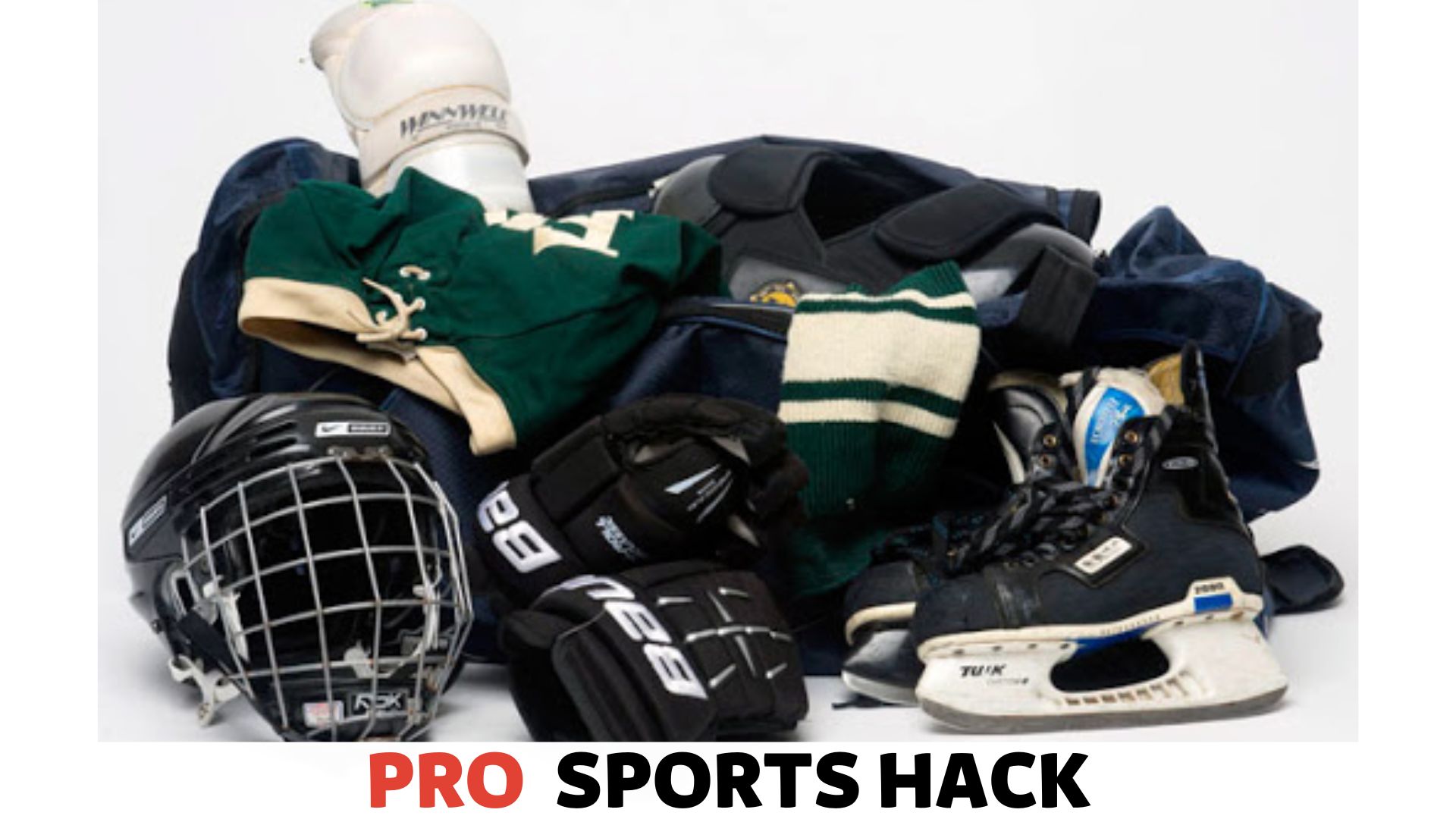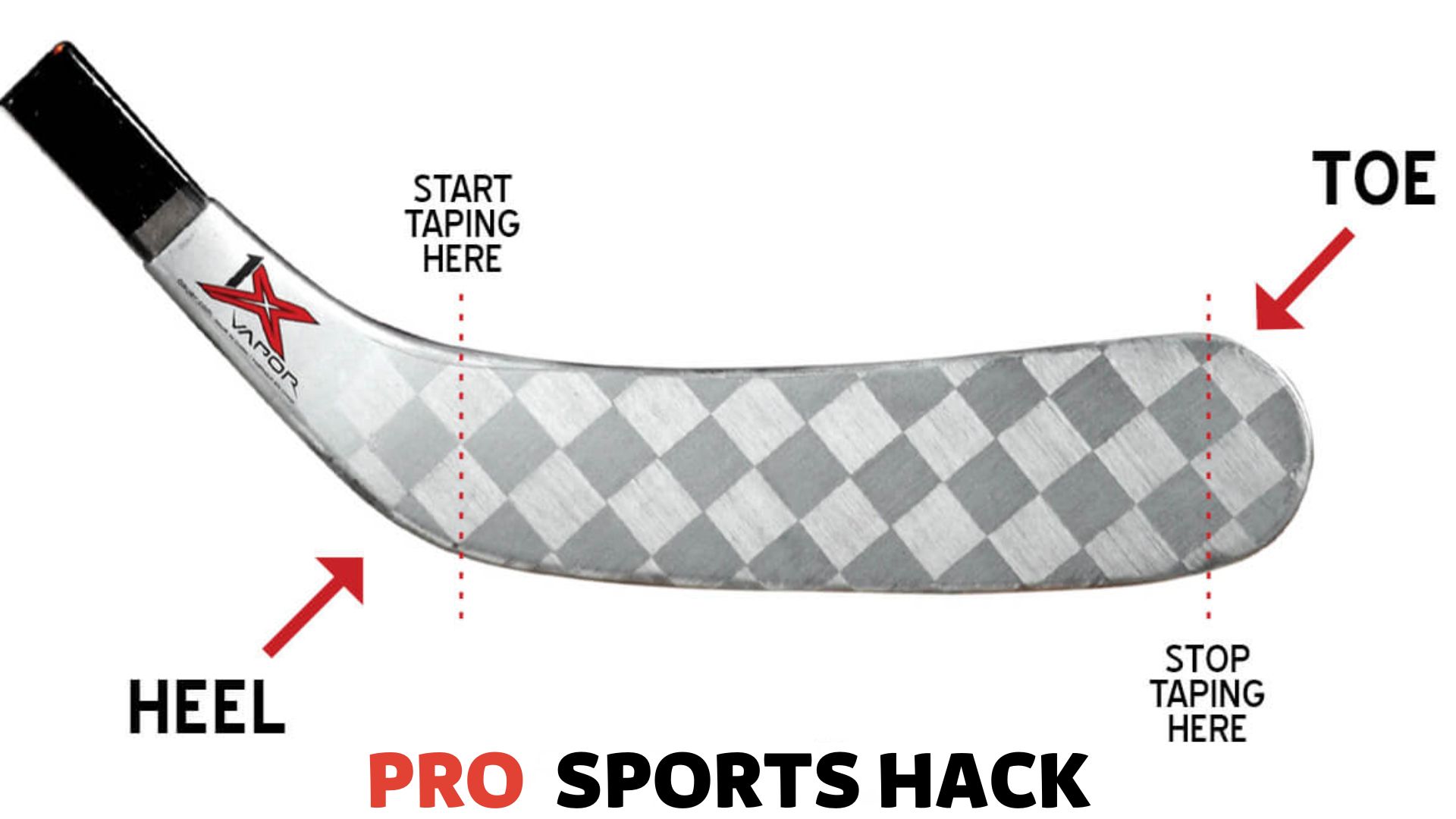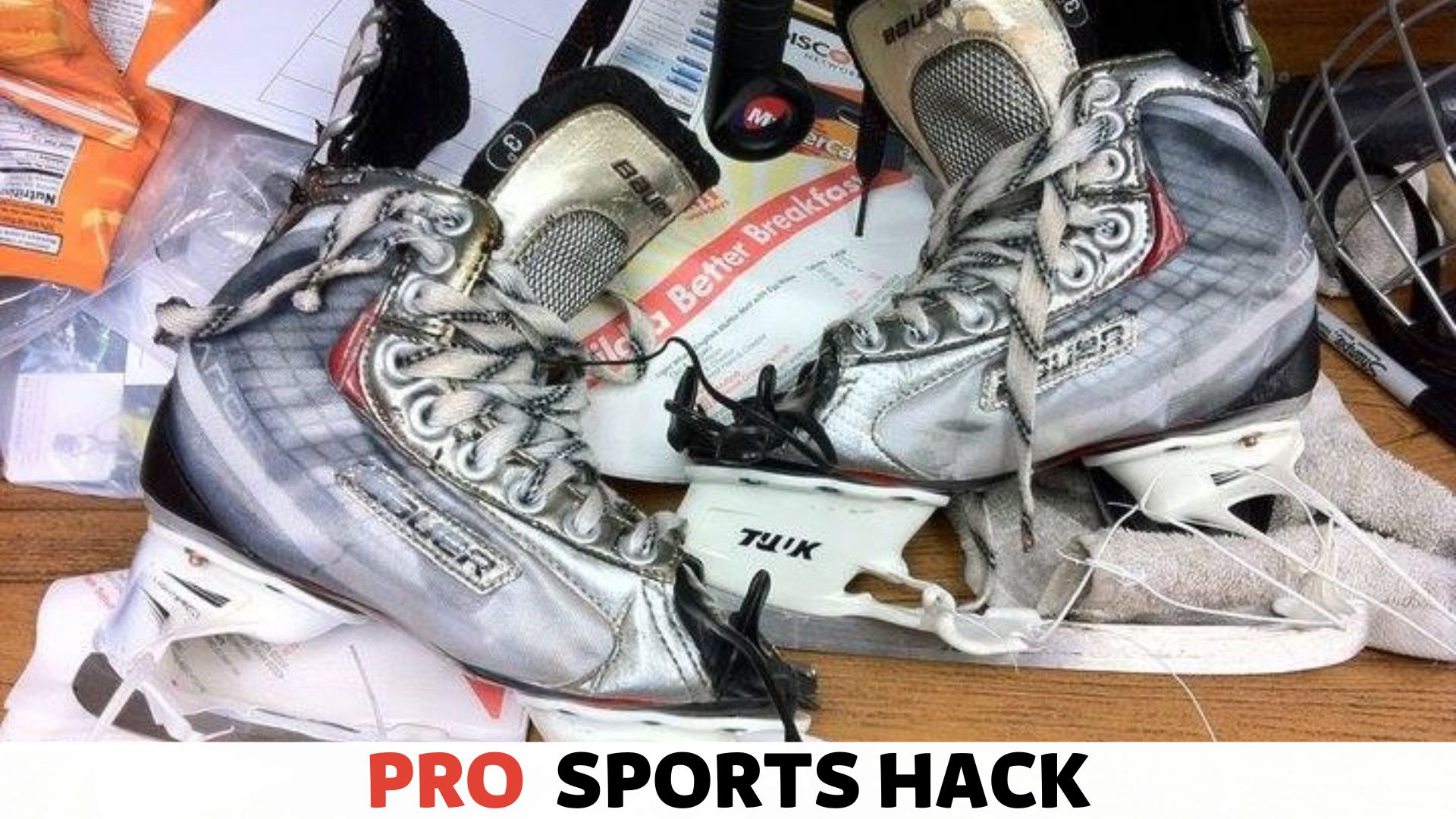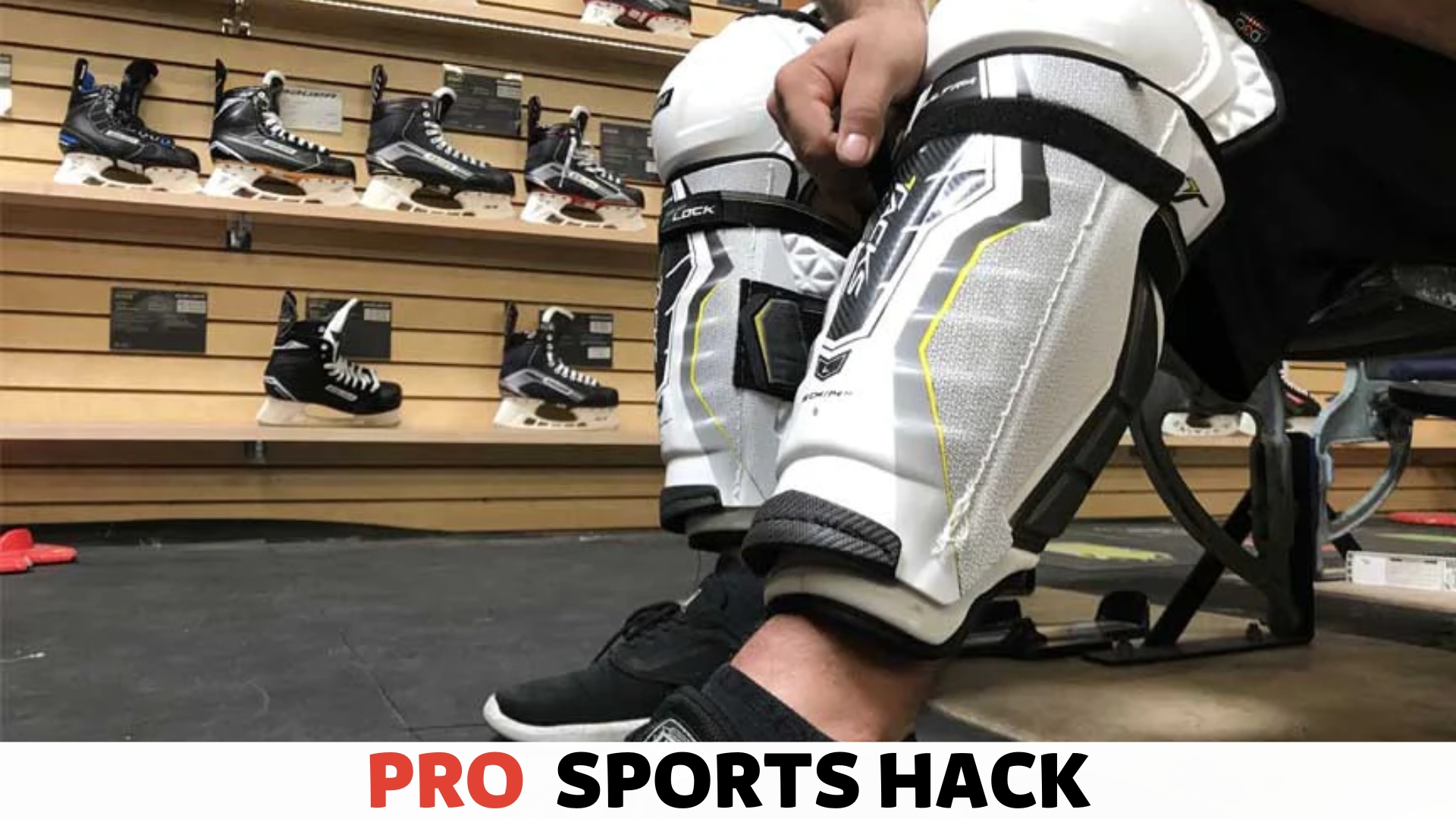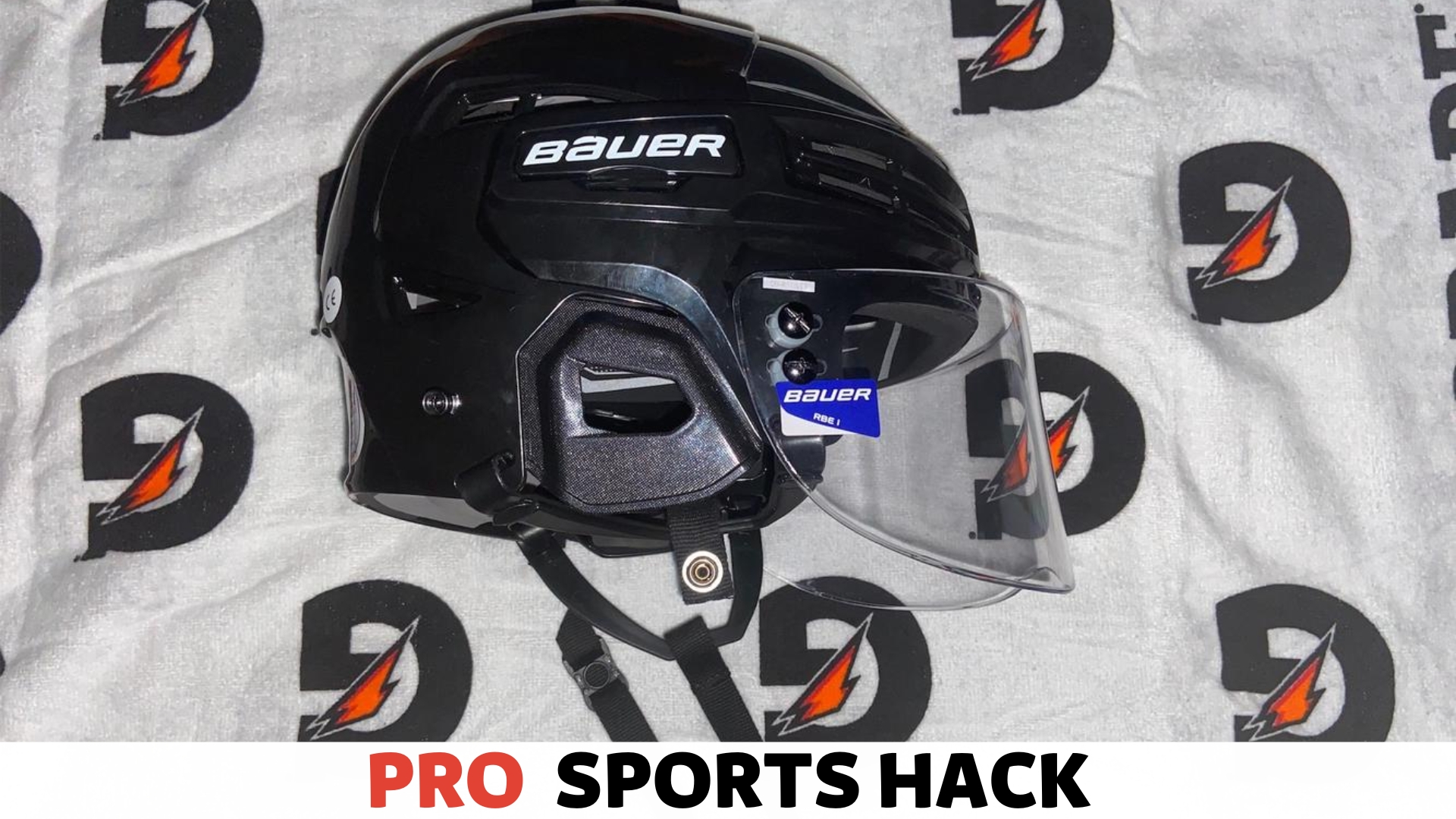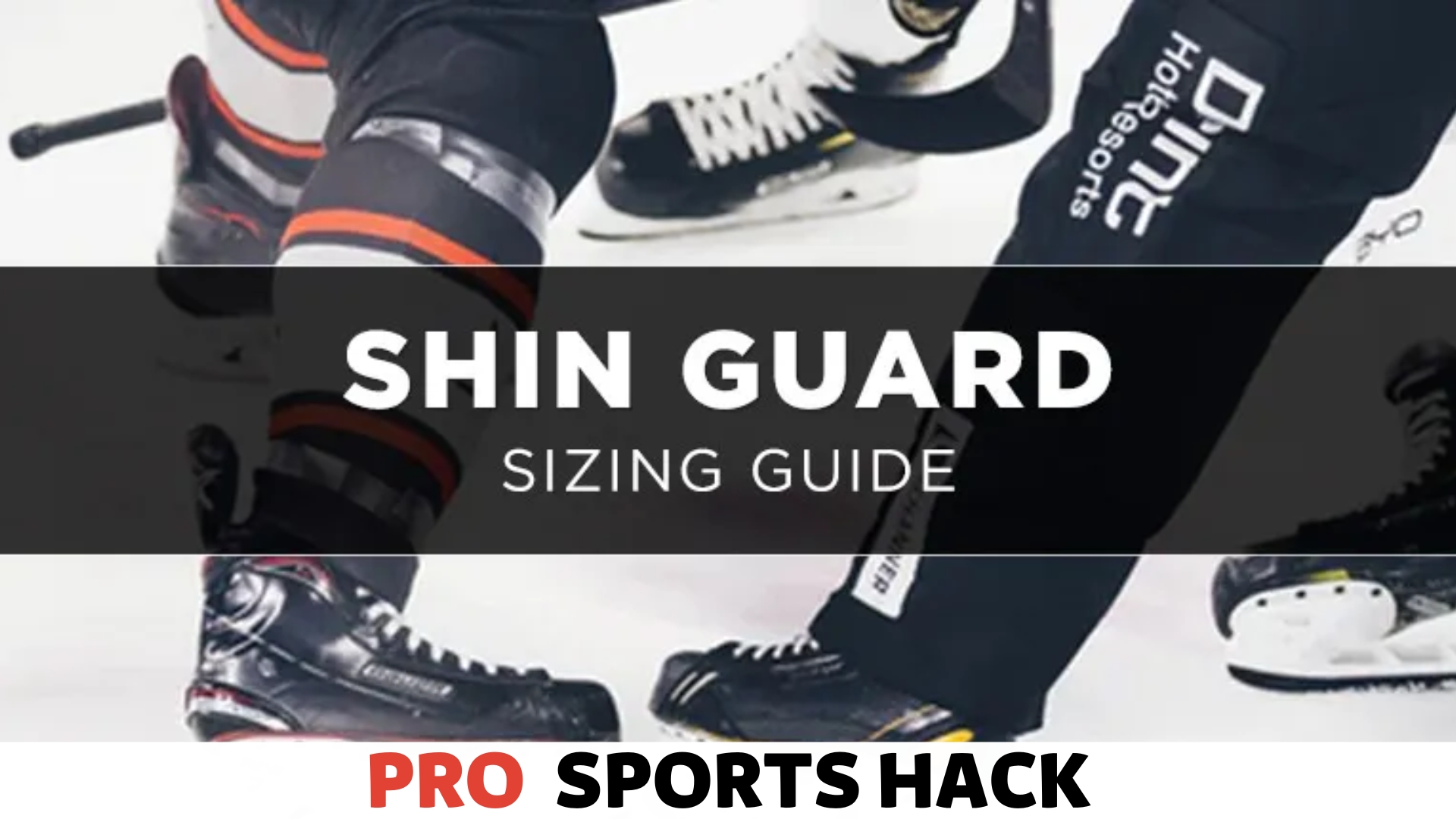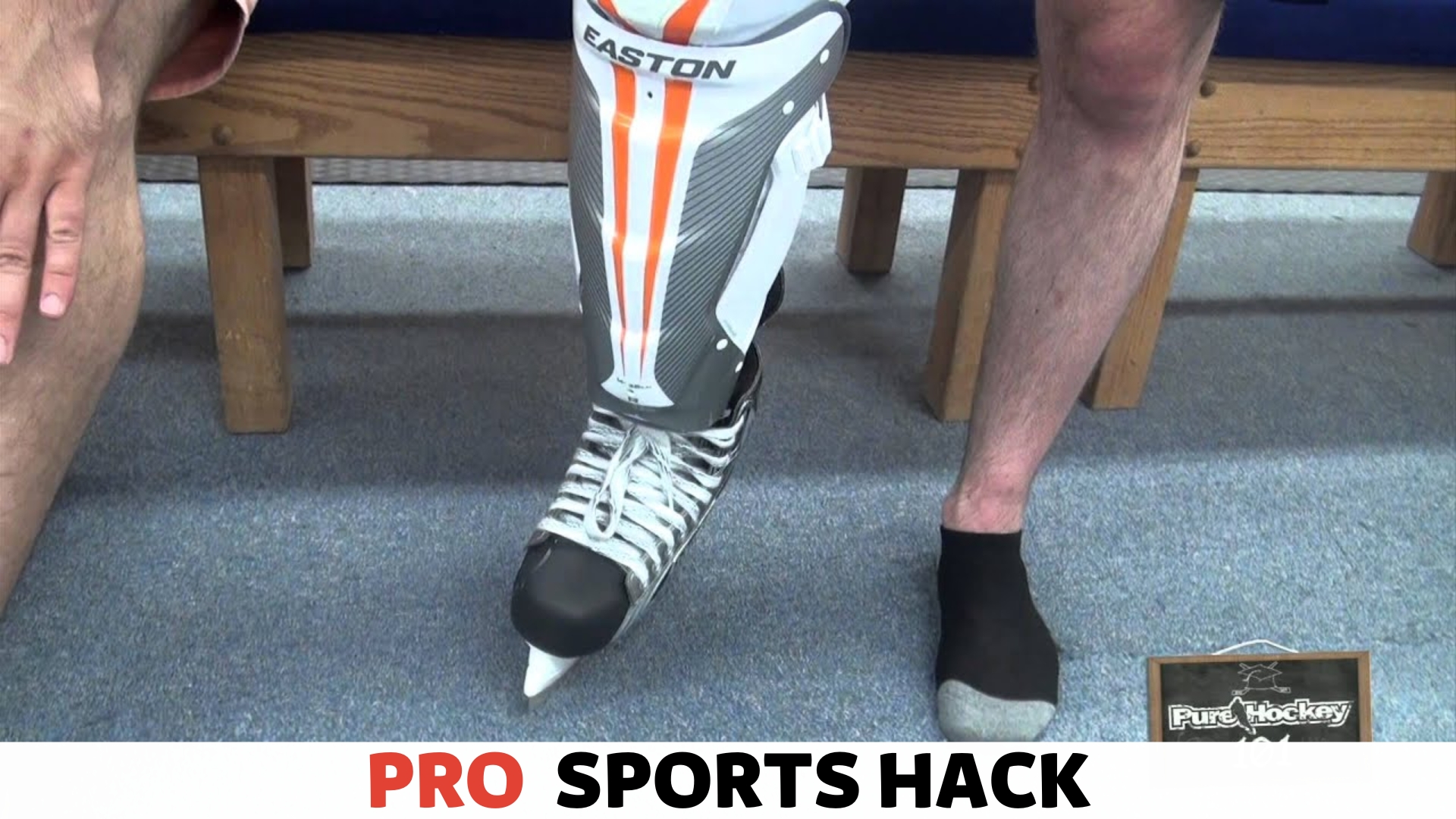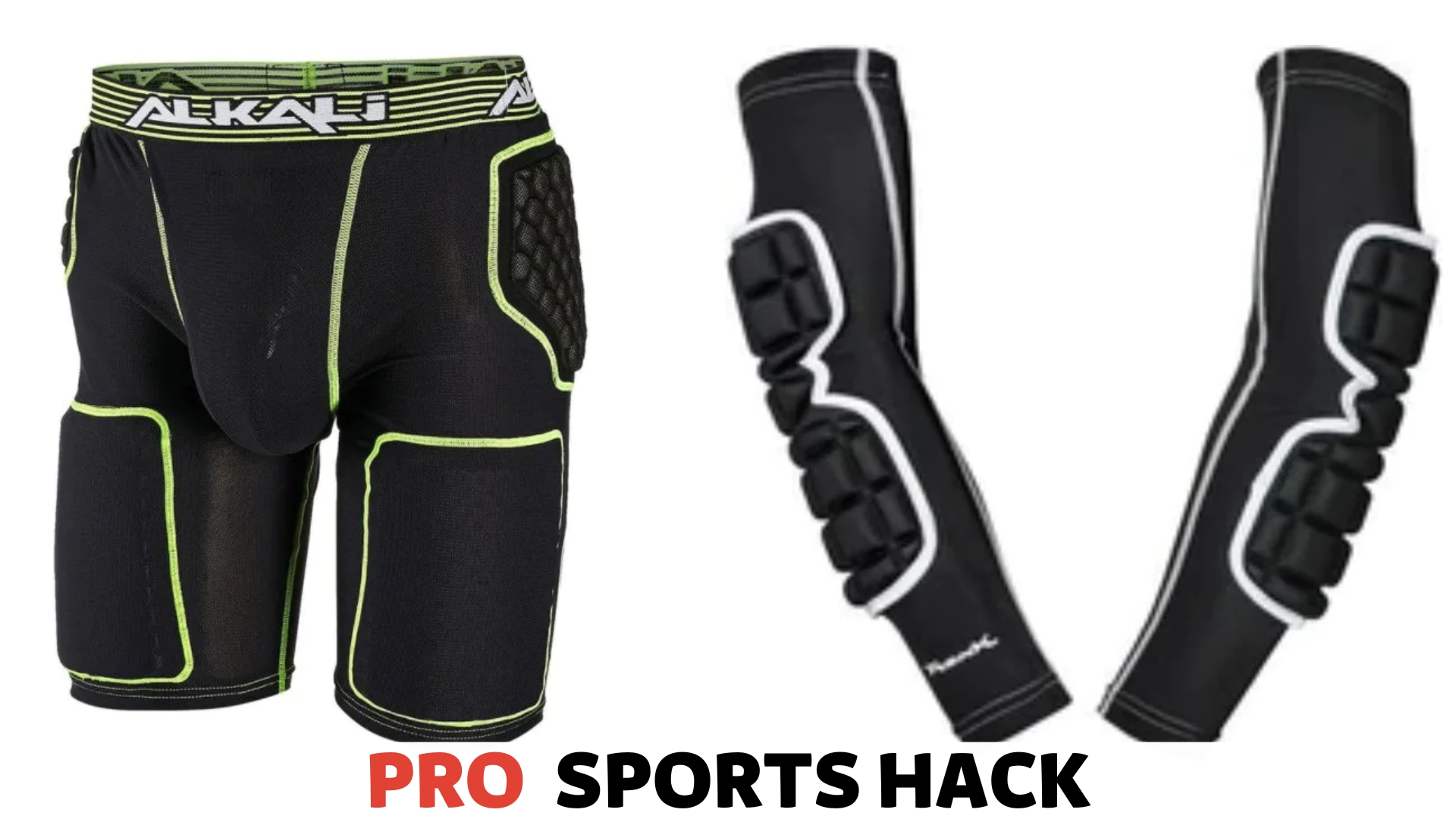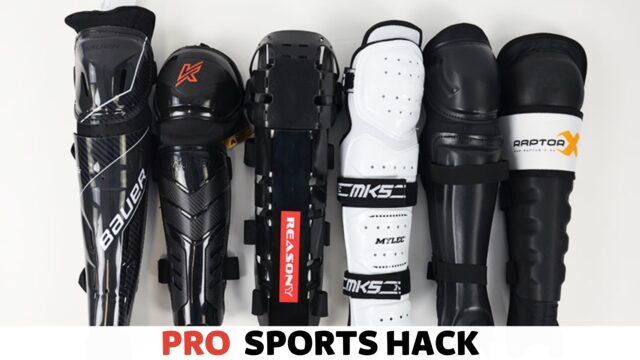
Field hockey shin guard sizing can be determined by measuring the circumference of the player’s calf and choosing the appropriate size based on a sizing chart provided by the manufacturer. Introducing the right size of shin guards to beginners and advanced players is crucial for their safety and performance on the field.
Ill-fitting shin guards can cause discomfort, restrict movement, and fail to provide adequate protection against impact. To ensure the perfect fit, it is essential to understand the sizing system and measurement techniques used for field hockey shin guards.
This comprehensive guide will walk you through finding the right size, from measuring your calf circumference to considering your playing position and personal preferences.
Following these steps, you can select shin guards that provide optimal comfort, mobility, and protection, enabling you to play your best game on the field.
Importance of Proper Field Hockey Shin Guard Sizing
Why Finding the Right Size is Crucial for Player Safety
When it comes to field hockey shin guards, finding the proper size is not just a matter of comfort and convenience – it is crucial for player safety. Shin guards are designed to protect the lower leg from impact, particularly from sticks and balls.
However, if the shin guards do not fit correctly, they may not provide adequate protection, leaving the player vulnerable to injuries.
Impact of Ill-fitting Shin Guards on Performance
Ill-fitting shin guards can significantly impact a player’s performance on the field. If the shin guards are too loose, they can shift during movement, causing distractions, discomfort, and potential injury.
On the other hand, if the shin guards are too tight, they can restrict movement and limit agility, hindering the player’s overall performance and ability from sprinting, tackling, and passing the ball effectively.
Moreover, improper sizing can also affect the player’s confidence and focus. Imagine constantly worrying about your shin guards slipping or too tight instead of focusing on the game.
This distraction can harm the player’s concentration and overall performance, ultimately affecting the team’s success.
Properly sized shin guards contribute to the player’s comfort and confidence, allowing them to concentrate solely on their performance and play the game to their fullest potential.
In our guide on field hockey equipment, we delve into the crucial topic of how should hockey shin guards fit. Finding the right size ensures optimal protection and comfort on the field.
Ensuring Proper Shin Guard Sizing
So, how can you ensure you find the right size of field hockey shin guards? Here are some tips to help you:
- Measure your leg properly: Take accurate measurements to determine the correct size of shin guards for your height and build. Measure the circumference of your leg just below the knee and refer to the manufacturer’s size guide.
- Try before you buy: It’s always recommended to try on shin guards before purchasing them. Put them on and make sure they sit comfortably on your leg, snug but not too tight. Walk around, bend, and flex your leg to check for any discomfort or restrictions in movement.
- Consider your position and playing style: Different positions and playing styles may require varying levels of protection and mobility. For example, a defender might prefer longer shin guards for enhanced coverage, while a forward may opt for lighter, more streamlined options for maximum speed and agility. Keep this in mind when selecting the size and style of your shin guards.
Remember, investing in the right size of field hockey shin guards is investing in your safety and performance on the field. Take the time to find the perfect fit and enjoy the game with confidence and peace of mind.
Measuring for the Perfect Fit
How to Measure the Player’s Leg for Accurate Sizing
When choosing field hockey shin guards, getting the right fit is crucial for comfort, protection, and performance. Measuring for the perfect fit can ensure that the shin guards provide adequate coverage and stay securely in place during the game.
Here is a step-by-step guide on how to measure the player’s leg for accurate sizing:
- Ensure the player wears socks or any other padding they normally wear during a game.
- Place the player seated with their legs bent at a 90-degree angle.
- Using a flexible measuring tape, locate the middle of the player’s kneecap.
- Starting from the center of the kneecap, measure down to the top of their ankle bone. Make sure the measuring tape follows the contour of the leg.
- Record the measurement in inches or centimeters, depending on the sizing system used by the brand of shin guards being considered.
Placement of the Measuring Tape
The placement of the measuring tape is crucial to obtaining accurate measurements for field hockey shin guard size. It is essential to follow these guidelines:
- Ensure the measuring tape is positioned along the front of the leg, centered over the shin bone.
- Avoid placing the measuring tape too tight or too loose. It should be snug enough to get an accurate reading without compressing the leg or leaving gaps.
- Ensure the measuring tape follows the natural shape and contours of the leg for precise measurements.
Taking the Right Measurements
When measuring for field hockey shin guards, it’s important to take the right measurements to guarantee a proper fit. Keep the following points in mind:
- Measure both legs, as they may have different sizes due to natural variations.
- Take measurements at the time of the day when the player’s legs are typically swollen or at their largest, as this will ensure a comfortable fit throughout the game.
- Record the measurements accurately to refer to size charts provided by different brands.
Considering Factors Such as Age, Height, and Playing Position
When determining the appropriate field hockey shin guard size, it’s important to consider various factors such as age, height, and playing position.
Different-sized players may require shin guards with different dimensions for optimal protection and performance. Here are some general guidelines:
- Younger players or those with smaller stature typically need smaller shin guards, while older or taller players may require larger sizes.
- Defensive players who are more likely to make contact with the ball or opponents may benefit from longer shin guards for increased coverage.
- Midfielders and forwards prioritizing agility and speed may opt for shorter shin guards that allow greater movement freedom.
- Consult size charts from different brands, as they can offer specific recommendations based on these factors.
By considering these factors and using accurate measurements, players can find field hockey shin guards that perfectly fit, ensuring comfort and protection during their games.
Choosing the Right Style and Type
When it comes to field hockey shin guards, selecting the right style and type is crucial for comfort and protection. There are different styles available, each offering unique features and benefits.
In this comprehensive guide, we will break down the various options and discuss the pros and cons of each style to help you make an informed decision.
So, let’s dive in and explore the different styles of field hockey shin guards.
Understanding Different Styles of Field Hockey Shin Guards
When it comes to selecting field hockey shin guards, there are three main styles to choose from:
- Anatomical shin guards
- Slip-in shin guards
- Shin socks with built-in guards
Anatomical Shin Guards
Anatomical shin guards are designed to conform to the shape of the leg, providing a snug and secure fit. They usually feature a hard outer shell for maximum protection against impacts and a soft inner lining for comfort.
The anatomical design ensures that the shin guards stay in place during intense movements, reducing the risk of slipping or twisting.
Slip-in Shin Guards
Slip-in shin guards are known for their simplicity and convenience. They are typically made of lightweight materials and have a sleeve-like design that easily slides onto the leg.
These shin guards are popular among players who prefer minimal gear and maximum mobility. Slip-in shin guards often provide adequate protection without compromising flexibility, allowing players to move freely on the field.
However, they may not offer the same level of coverage as anatomical shin guards.
Shin Socks With Built-in Guards
Shin socks with built-in guards combine the protection of shin guards with the convenience of wearing socks. These shin guards are integrated into specially designed socks, eliminating the need for additional straps or sleeves.
The built-in guards are typically made of a lightweight and durable material, ensuring both comfort and protection.
Shin socks with built-in guards are popular for players who prioritize simplicity and prefer a streamlined look.
When it comes to field hockey safety, our comprehensive blog post, “The Ultimate Hockey Shin Pads Size Guide: Finding Your Perfect Fit,” is your go-to resource. Discover the essential tips and tricks for ensuring your shin guards provide the best protection while allowing for maximum performance.
Pros and Cons of Each Style
Here is a glance at the advantages and disadvantages of each style:
| Anatomical shin guards | Slip-in shin guards | Shin socks with built-in guards |
|---|---|---|
| Snug and secure fit Maximum protection Stay in place during intense movements | Lightweight and convenient Maximum mobility | Integrated design Simplicity and streamlined look |
| May restrict flexibility slightly | May not offer the same level of coverage as anatomical shin guards | Limited customization options |
Factors to Consider When Selecting a Style
Choosing the right style of shin guards depends on several factors:
- Personal preference: Consider your comfort level and playing style. Do you prioritize agility and mobility or prefer maximum protection and stability?
- Level of play: The level at which you play affects the intensity and physicality of the game. Higher-level players may require more robust protection, while lower-level players may opt for lighter gear.
- Position: Different positions require different types of movement and, therefore, varying levels of protection. Defenders, for example, may prioritize maximum coverage and stability, while forwards may favor lightweight and flexible options.
- Budget: Cost can also be a deciding factor when purchasing shin guards. Anatomical shin guards are more expensive than slip-in shin guards or socks with built-in guards.
Considering these factors will help you select a style that suits your needs and preferences while providing adequate protection on the field.
Understanding the different styles of field hockey shin guards is essential when shopping for the right gear. Whether you prefer anatomical shin guards, slip-in shin guards, or shin socks with built-in guards, each style offers advantages and disadvantages.
You can make a well-informed decision by considering personal preference, level of play, position, and budget. Remember, the right choice will keep you protected and enhance your performance on the field.
Finding the Ideal Length
Field hockey shin guards are essential to every player’s protective gear. They safeguard the shins from potential injuries and give players the confidence to tackle and defend without hesitation.
However, choosing the right size and fit can be daunting, especially for beginners. When finding the ideal length for your shin guards, several factors need to be considered, such as the player’s height and position, the advantages of longer or shorter shin guards, and how to adjust them for a customized fit.
In this comprehensive guide, we will delve into these factors to help you make an informed decision and ensure maximum comfort and protection on the field.
Determining the Optimal Length for the Player’s Height and Position
Regarding field hockey shin guards, one size does not fit all. The optimal length of shin guards depends on the player’s height and position. Generally, the height range of a player dictates the recommended length of shin guards.
Here’s a quick reference guide:
| Height Range | Recommended Shin Guard Length |
|---|---|
| Below 4’6″ (137 cm) | 8″ |
| 4’6″ – 5′ (137 – 152 cm) | 10″ |
| 5′ – 5’4″ (152 – 163 cm) | 12″ |
| Above 5’4″ (163 cm) | 14″ |
Advantages of Longer or Shorter Shin Guards
The length of shin guards can impact a player’s comfort, mobility, and level of protection on the field. Understanding the advantages of both longer and shorter shin guards can help you make an informed choice:
- Longer Shin Guards: Longer shin guards provide increased coverage, offering enhanced protection for the shins and lower part of the knee. They are especially beneficial for defensive players who often face strong hits and aggressive tackles. Additionally, longer shin guards can provide added stability to the ankle, reducing the risk of sprains during sudden movements.
- Shorter Shin Guards: Shorter shin guards are generally preferred by offensive players and those who value agility and maneuverability on the pitch. They allow for greater freedom of movement, enabling players to easily dribble, pass, and shoot. If you have shorter legs, shorter shin guards may also offer a better fit and prevent discomfort during prolonged periods of play.
Adjusting the Shin Guards for a Customized Fit
Once you have determined the ideal length of shin guards based on your height and position, it’s crucial to ensure a customized fit for maximum comfort and protection. Follow these steps to adjust your shin guards:
- Put on your socks and shin guards, ensuring they are centered on your shins.
- Attach any adjustable straps or closures to secure the shin guards in place.
- Ensure the shin guards cover the entire length of your shin bone, from just below the knee to the top of your ankle.
- Adjust the straps or closures to ensure a snug fit that is not too tight or loose. The shin guards should sit firmly in place without restricting blood circulation.
- Walk around and perform some basic movements to test the comfort and stability of the shin guards. Make any necessary adjustments to achieve the perfect fit.
Following these guidelines, you can confidently choose the ideal length of field hockey shin guards and adjust them to provide a customized fit.
Remember, the right shin guards protect you from potential injuries and contribute to your performance on the field. Stay safe, stay confident, and enjoy the game!
Evaluating Comfort and Flexibility
The Role of Comfort in Overall Player Performance
The comfort level of field hockey shin guards plays a pivotal role in determining a player’s overall performance on the field. When choosing the right shin guards, comfort should be one of the top priorities.
Shin guards that provide a comfortable fit allow players to focus solely on their game without any distractions or discomfort hindering their movements.
Examining the Materials Used in Shin Guard Construction
The materials used in constructing field hockey shin guards can greatly impact their comfort and flexibility. When evaluating shin guards, examining the materials used to ensure they are high-quality and designed with player comfort in mind is essential.
Many shin guards are made using a combination of foam and plastic materials. Foam cushions the impact of any direct hits to the shins, while plastic provides a sturdy and protective outer shell.
Some shin guards may also have additional padding or gel inserts for comfort.
It’s important to note that not all shin guards are created equal regarding materials. Some brands offer shin guards with more advanced or specialized materials, such as lightweight and flexible carbon fiber.
These materials provide superior protection while allowing for enhanced comfort and flexibility during gameplay.
Evaluating Flexibility and Range of Motion
In addition to comfort, evaluating the flexibility and range of motion provided by field hockey shin guards is crucial. Shin guards are essential protective gear, so they should not hinder players’ movements or limit their agility on the field.
Flexible shin guards allow players to move easily and naturally without impeding their range of motion. This is particularly important for field hockey players, who need the freedom to run, jump, dribble, and tackle efficiently.
When assessing the flexibility of shin guards, it’s important to consider their design and construction. Look for shin guards that feature anatomically shaped plates that contour to the shape of the shins, providing a secure and comfortable fit.
Some shin guards also incorporate additional flex points or hinge mechanisms, contributing to overall flexibility. These features ensure that the shin guards move with the player’s legs, preventing any restrictions or discomfort.
Finding the perfect balance between comfort and flexibility is the key to selecting the right field hockey shin guards. By prioritizing these factors, players can enhance their performance on the field while adequately protecting themselves.
Common Sizing Mistakes to Avoid
Properly fitted shin guards are essential for field hockey players to protect their legs from potential injuries during matches or training sessions.
However, many athletes and parents often make common sizing mistakes that can compromise safety and performance on the field.
By avoiding these errors and following the right guidelines, you can ensure that your shin guards fit snugly and provide optimal protection. Let’s delve into some of the most prevalent sizing mistakes and learn how to avoid them.
Overlooking the Importance of Sizing
One of the shin guards’ most commonly overlooked aspects is the importance of proper sizing. Some players may view shin guards as a mere accessory, opting for a generic size that may or may not fit correctly.
This can lead to discomfort, restricted movement, and diminished performance. Therefore, it is crucial to prioritize sizing when selecting field hockey shin guards.
Choosing the Wrong Size Due to Age Assumptions
Another mistake often made when picking shin guards is selecting the wrong size based on assumptions about age. It is essential to remember that age alone shouldn’t be the sole determining factor for shin guard sizing.
Each individual has unique body proportions and leg sizes that may not necessarily correspond to their age group’s average measurement.
Therefore, it is vital to carefully measure and consider personal leg dimensions rather than relying solely on age-related assumptions.
Ignoring Personal Preferences and Playing Style
When it comes to field hockey shin guards, personal preferences and playing style should not be ignored. Different players have different priorities – some prefer a snug fit for enhanced protection, while others may focus on flexibility and mobility.
Additionally, aggressive players may require more coverage and padding than those with a less physical approach. Ignoring these factors and choosing shin guards solely based on size charts can result in discomfort and restricted performance on the pitch.
Therefore, it is crucial to consider personal preferences and playing style when selecting the appropriate size.
Expert Tips for Shin Guard Sizing
Ensuring the right fit for your field hockey shin guards is crucial for maximum protection and optimal performance on the field. To achieve the perfect fit, it’s essential to consider vital expert tips from experienced players, coaches, and manufacturers.
Factor in their input, follow the recommendations for specific brands and models and make necessary adjustments or modifications for a comfortable and secure fit.
While we focus on hockey gear, we understand that sports equipment maintenance is essential. In our blog post, we answer questions like, “Can football gloves be washed?” Stay informed about the proper care routines for various sports gear to ensure longevity and hygiene.
Input from Experienced Players, Coaches, and Manufacturers
Experienced players, coaches, and manufacturers are invaluable sources of knowledge regarding finding the right size for field hockey shin guards. Their expertise is derived from years of playing and coaching and their extensive understanding of the equipment. Here are some key factors they consider:
- Measurement: Accurate measurement of your shin is the foundation for determining the correct size. Use a measuring tape to measure the distance from your ankle bone to the bottom of your kneecap. This measurement will help you select the appropriate length of shin guards.
- Fit Preference: Different players prefer different fits. Some may like a snug fit, while others prefer a looser fit. Consider your preference when choosing a size, but remember that a too-tight fit might restrict movement, while a too-loose fit can lead to discomfort and inadequate protection.
- Position and Playing Style: Your position and style can influence the type of shin guard sizing you need. Forwards who frequently dive or slide may require longer shin guards, while defenders who engage in more physical play may opt for heavier and more protective shin guards.
Recommendations for Specific Brands and Models
The field hockey market offers various brands and models, each with unique sizing standards. Here are some recommendations for popular brands and models:
| Brand | Model | Size Range |
|---|---|---|
| Grays | International Pro | XS-XL |
| Mercian | Evolve 0.2 | XS-XL |
| Gryphon | Taboo Pro | XXS-XXL |
Remember to refer to the specific size charts provided by each brand for accurate measurements.
Adjustments and Modifications for a Better Fit
You may need adjustments to ensure a perfect fit, even with the right size. Here are some tips:
- Strap adjustments: Most shin guards come with adjustable straps. Experiment with different strap tensions until you find the most comfortable and secure fit.
- Padding customization: Adding extra padding or removing some can help achieve a better fit. Some shin guards come with removable padding inserts, allowing you to customize the level of protection and fit.
- Socks and sleeves: Wearing appropriate socks and sleeves can improve your shin guards’ overall fit and comfort. Look for options that promote airflow, prevent slippage, and enhance your playing experience.
By combining expert input, brand and model recommendations, and suitable adjustments, you can ensure your field hockey shin guards fit perfectly, providing the right balance of protection and comfort.
Don’t hesitate to spend time finding the right size, as it’s an investment in your performance and safety on the field.
Frequently Asked Questions
How Do You Size Field Hockey Shin Guards?
To size field hockey shin guards, measure the length from the bottom of your knee cap to your ankle bone. Use this measurement to select the appropriate size of shin guards. Ensure they fit snugly and protect the front of your lower leg during play.
How Do I Know What Size Shin Guards I Need?
To determine the correct size of shin guards you need, measure the distance between your ankle and knee. Match this measurement to the sizing guide provided by the manufacturer. Choose a size that offers a snug fit and sufficient leg coverage.
What Size Shin Guards for A 9-Year-Old?
Shin guards for a 9-year-old should be size small. Make sure they properly cover the shins and fit comfortably. Measure the child’s shin length to ensure the right fit for protection during sports activities.
How Big Are Xl Shin Guards?
XL shin guards are typically larger and suitable for individuals with bigger legs. They provide better coverage and protection compared to smaller sizes.
How Do I Choose the Right Size of Field Hockey Shin Guards?
Measure your shin length and circumference to find the appropriate size for a comfortable and secure fit.
Conclusion
Finding the right field hockey shin guard size is crucial for both comfort and protection on the field. By following the steps outlined in this comprehensive guide, you can ensure that you choose the appropriate size for your needs.
Consider your height, weight, and positional requirements when selecting shin guards.
Don’t forget to check for proper fit and adjust as needed. Preparing yourself with the right equipment will enhance your performance and keep you safe during intense gameplay.




![Cat in the Chrysalis Spoiler: All You Need To Know [Updated] Cat in the Chrysalis Spoiler](https://prosportshack.com/wp-content/uploads/2024/02/Cat-in-the-Chrysalis-Spoiler-100x75.jpg)







